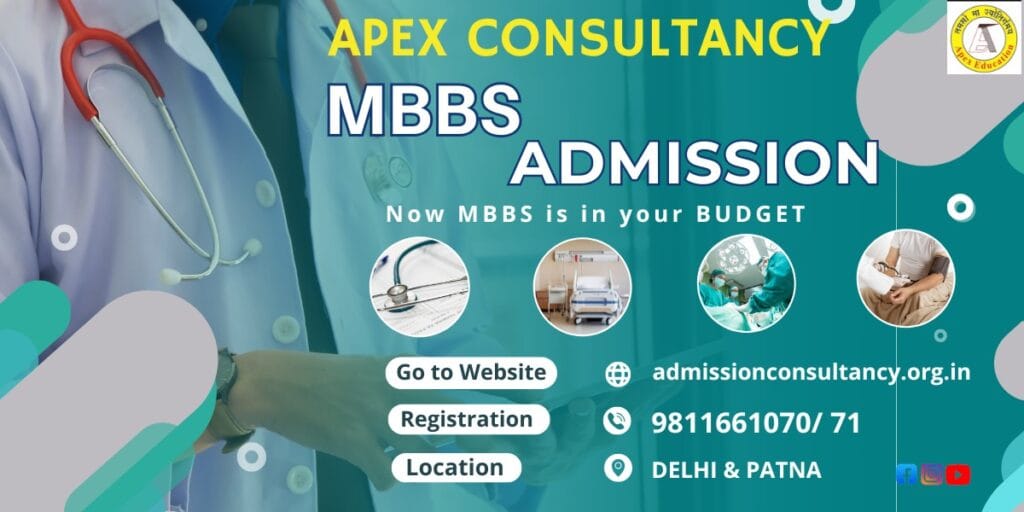
MBBS Course Admission Information
Introduction
The Bachelor of Medicine and Bachelor of Surgery (MBBS) is a highly sought-after professional degree for those aspiring to become doctors. It is a five-and-a-half-year program, including one year of mandatory internship. The admission process for MBBS is highly competitive, involving national and state-level entrance exams, eligibility criteria, and counseling procedures.
Eligibility Criteria for MBBS Admission
To secure admission to an MBBS program, candidates must fulfill specific academic and age-related requirements:
1. Educational Qualification
Candidates must have completed their 10+2 (or equivalent) from a recognized board.
Compulsory subjects: Physics, Chemistry, Biology/Biotechnology, and English.
Minimum aggregate marks:
General Category: 50%
OBC/SC/ST: 40%
PWD Candidates: 45%
2. Age Limit
The minimum age limit is 17 years at the time of admission or before December 31 of the admission year.
There is no upper age limit as per recent NEET guidelines.
3. Nationality
Indian citizens, Overseas Citizens of India (OCI), and foreign nationals can apply for MBBS programs in India.
MBBS Admission Process
The MBBS admission process in India is conducted through entrance exams, counseling, and seat allotment.
Step 1: Qualify for NEET (National Eligibility cum Entrance Test)
NEET UG is the only entrance exam for MBBS admission in India. It is conducted by the National Testing Agency (NTA) annually.
Exam Pattern:
Subjects Covered: Physics, Chemistry, Biology
Total Questions: 200 (180 need to be answered)
Total Marks: 720
Marking Scheme: +4 for correct answer, -1 for incorrect answer
Exam Mode: Offline (Pen and Paper-based)
Step 2: NEET Result and Cutoff
NEET results determine admission eligibility.
The NEET cutoff varies yearly and is category-based:
General: 50th percentile
OBC/SC/ST: 40th percentile
PWD: 45th percentile
Step 3: MBBS Counseling Process
Candidates who qualify for NEET can participate in counseling sessions for seat allotment. There are different types of counseling processes based on the category of colleges:
1. All India Quota (AIQ) Counseling
Conducted by MCC (Medical Counseling Committee) for 15% of total seats in government medical colleges.
Covers AIIMS, JIPMER, ESIC, AFMC, and deemed universities.
Conducted in multiple rounds (Round 1, Round 2, and Mop-up Round).
2. State Quota Counseling
Conducted by respective state authorities for 85% of government medical seats and private colleges within the state.
Candidates must meet the domicile requirements to apply for state quota seats.
3. Counseling for Deemed and Private Universities
Private and deemed universities conduct their own admission process through MCC or state counseling authorities.
Fees for private medical colleges are higher than government institutions.
Types of Medical Colleges Offering MBBS in India
MBBS programs are available in different categories of institutions:
1. Government Medical Colleges
Funded by the government, these colleges offer MBBS courses at affordable tuition fees.
Examples: AIIMS, JIPMER, MAMC, KGMU, GMCs across states.
2. Private Medical Colleges
Run by private organizations; fees are significantly higher.
Examples: Manipal Medical College, Kasturba Medical College, Christian Medical College (CMC), SRM Medical College.
3. Deemed Universities
Universities with autonomous status recognized by the UGC and MCI.
Examples: DY Patil Medical College, Bharati Vidyapeeth, Amrita Institute of Medical Sciences.
4. AIIMS and JIPMER Institutes
AIIMS and JIPMER conduct MBBS admissions through NEET AIQ counseling.
Offer high-quality medical education with advanced infrastructure and research facilities.
MBBS Course Structure
The MBBS course is divided into three phases:
1. Pre-Clinical Phase (1.5 years)
Subjects: Anatomy, Biochemistry, Physiology
2. Para-Clinical Phase (1 year)
Subjects: Pathology, Pharmacology, Microbiology, Forensic Medicine
3. Clinical Phase (2 years)
Subjects: Medicine, Surgery, Pediatrics, Obstetrics & Gynecology, ENT, Ophthalmology
4. Internship (1 Year)
Compulsory rotating internship in hospitals to gain practical exposure.
MBBS Course Fees in India
MBBS tuition fees vary based on the type of institution:
| Type of College | Annual Fees (Approx.) |
|---|---|
| Government Medical Colleges | ₹10,000 – ₹1 lakh |
| AIIMS and JIPMER | ₹1,500 – ₹5,000 |
| Private Medical Colleges | ₹8 lakh – ₹25 lakh |
| Deemed Universities | ₹15 lakh – ₹40 lakh |
MBBS Scholarships and Financial Aid
Several scholarships are available for meritorious and economically weaker students:
Central Sector Scholarship Scheme (CSSS)
AIIMS Merit Scholarship
State Government Scholarships for Medical Students
Educational Loans from Banks
Career Opportunities After MBBS
After completing MBBS, graduates have multiple career options:
1. Postgraduate Studies (MD/MS/DM/MCh)
Specialization in Medicine, Surgery, Pediatrics, Cardiology, Neurology, etc.
Entrance exams: NEET PG, AIIMS PG, JIPMER PG.
2. Medical Practice
Start a private practice or work in government/private hospitals.
3. Government Jobs
Apply for positions in government hospitals, defense medical services, railways, and public health departments.
4. Research and Teaching
Work in medical research organizations like ICMR, WHO, CSIR.
Become a medical professor at medical colleges.
5. Hospital Administration
Pursue MBA in Hospital Management and work in healthcare administration.
Conclusion
MBBS admission in India is a rigorous process that requires strong academic preparation and dedication. Clearing NEET is the key to securing admission into top medical colleges. Candidates should research well, prepare thoroughly, and choose colleges wisely based on their rank, preferences, and financial capacity. Becoming a doctor is a noble profession, offering vast opportunities to contribute to society and the healthcare sector.
